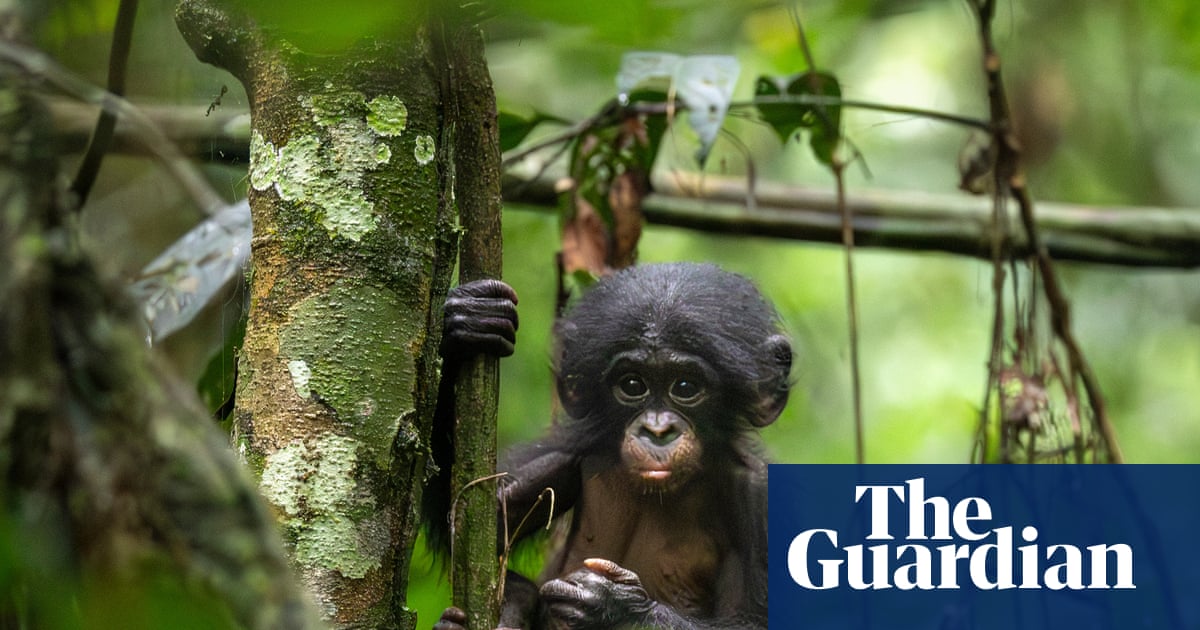
"A few dozen large nests appear in the mist of equatorial dawn, half-hidden behind a tangle of vines and leaves. That is where the bonobos sleep, 12 metres above the ground. But it has rained all night, and the primates are in no hurry to get up. It is 6.30am when the first head emerges. It gives a cry, a sharp bark, and another silhouette unfolds from its cocoon of branches. And then another. Within five minutes, the whole group is awake yawning, stretching, straightening."
"The two species diverged about 1-2 million years ago, when a few groups of chimpanzees are thought to have crossed the river, probably during a period of exceptional drought. Those early migrants evolved differently: chimpanzees on the right bank developed male-dominated societies, sustaining traditions of collective hunting and recurring conflict with other groups. Among bonobos, females are the dominant sex, and their societies are less aggressive and more peaceful."
A few dozen large nests appear in the mist of equatorial dawn, half-hidden behind a tangle of vines and leaves where bonobos sleep about 12 metres above the ground. The primates have fine features, long delicate limbs, and a less stocky build than chimpanzees. Bonobos live on the left bank of the Congo River while chimpanzees occupy the right bank across central and eastern Africa. The two species diverged about 1–2 million years ago, producing different social systems: male-dominated, aggressive chimpanzees and female-dominated, relatively peaceful bonobos. Brief sexual encounters often defuse conflict among bonobos. Scientific observation began in the 1970s at sites such as Wamba and Lomako. Bonobos face increasing threats from poaching and deforestation.
Read at www.theguardian.com
Unable to calculate read time
Collection
[
|
...
]